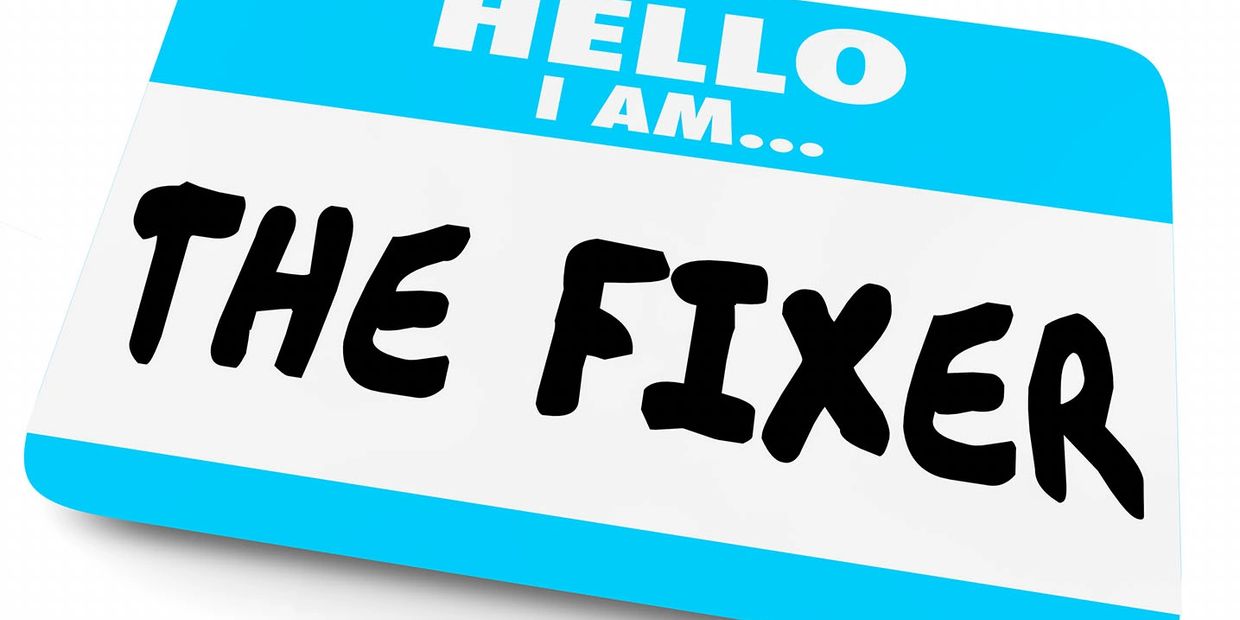
I diagnose and help leaders FIX tough problems
Problem Solving for leaders, teams, strategists. Out of the box thinking. New eyes.
The origin of this term came from several colleagues over the years, so it wasn't something I recognized as such on my own, turns out it's what I do. At first, I wasn't going to use it in my own materials or for business, but that is often what people are looking for. Something out of ordinary, a fresh look, "child's" eyes. These are all terms for looking at a challenge be it a problem or opportunity differently. It also speaks to mental toughness and the determination & grit to keep going. Again - this section is something people tell me I do. To me its just how I am. But enough about me.
Ethics and behavior that does not compromise integrity and trust are crucial. Even in the toughest of times, leaders, good ones, cannot trade on ethics for a quick fix, or enter into compromises that are unethical and weaken your integrity.
Knowing the difference is a blend of personal rules, common sense, and your network or colleagues take on your actions.
Fixing, is often portrayed as the act of cutting corners, working the hidden relationships, or worst case illegal acts such as bribes. Its often seen in movies and fiction, much like a detective with a commercial side. Either way it has the key characteristic of being done in secret.
Inspired by the phrase "Ethical Hacking", I experienced a light-bulb moment, to consider the fixing aspect of what I do as just that, "Ethical Fixing" in my professional description, because honestly, its what I do.
A lot of what I consider Ethical Fixing is rooted in works such as Edgar Schein's "Humble Inquiry: The Gentle art of Asking Instead of Telling". A good review is here. Please read this book, its about 100 page. Read it first if you aren't comfortable with the notion of an Ethical Fixer, you may change your mind. You can get the book here.
There is the strategic, the overt, the planned, and then there is the relationship building, story telling, vision setting, and all the human things we do.
Just like Hacking, Fixing can be black or white. So think of Ethical Fixing, as White Hat Fixing. That term just didn't sound as good.
Just like Hacking, Fixing diagnoses, assesses, and takes action.
And just like Hacking, its something we need to be mindful of, maturely, and accept as good or evil. Its the purest form of learning. Its living in the real world. I, like many of you, learn best by doing. Fixing is doing, not planning forever.
Fixing in the same sense is coming to terms with the fact that we are humans in an imperfect SYSTEM (company, market, world), and to deliver significant positive changes, for our clients and stakeholders, we need to deal with this human element openly, positively, and ethically, while still being able to help people see the vision and get there. Its a harder route, but its the one I can sleep with best.
Ethical Fixing
- Helping someone see the vision, because you need their sponsorship to keep moving, although they may not be a direct contributor.
- Setting a vision which requires huge fundamental changes to long standing governance models. Getting there by creating a business need through the demonstration of the art of the possible.
NOT Ethical Fixing
- Working the relationships outside your stakeholders and leadership scope, and doing so without sharing your intent with your sponsors.
- Bribing someone.
- Threatening someone - keep in mind the perception of a threat as to one's job security is also a threat, its a means to coerce. How often does that become a self-imposed threat ? Wouldn't more transparency and an Ethics backbone be a help here ?
2019 Mark Landy. Creative Commons Share-Alike. Creative Commons Attribution 4.0 International And in accordance with Fair Use.
Cookie Policy
This website uses cookies. By continuing to use this site, you accept our use of cookies.
